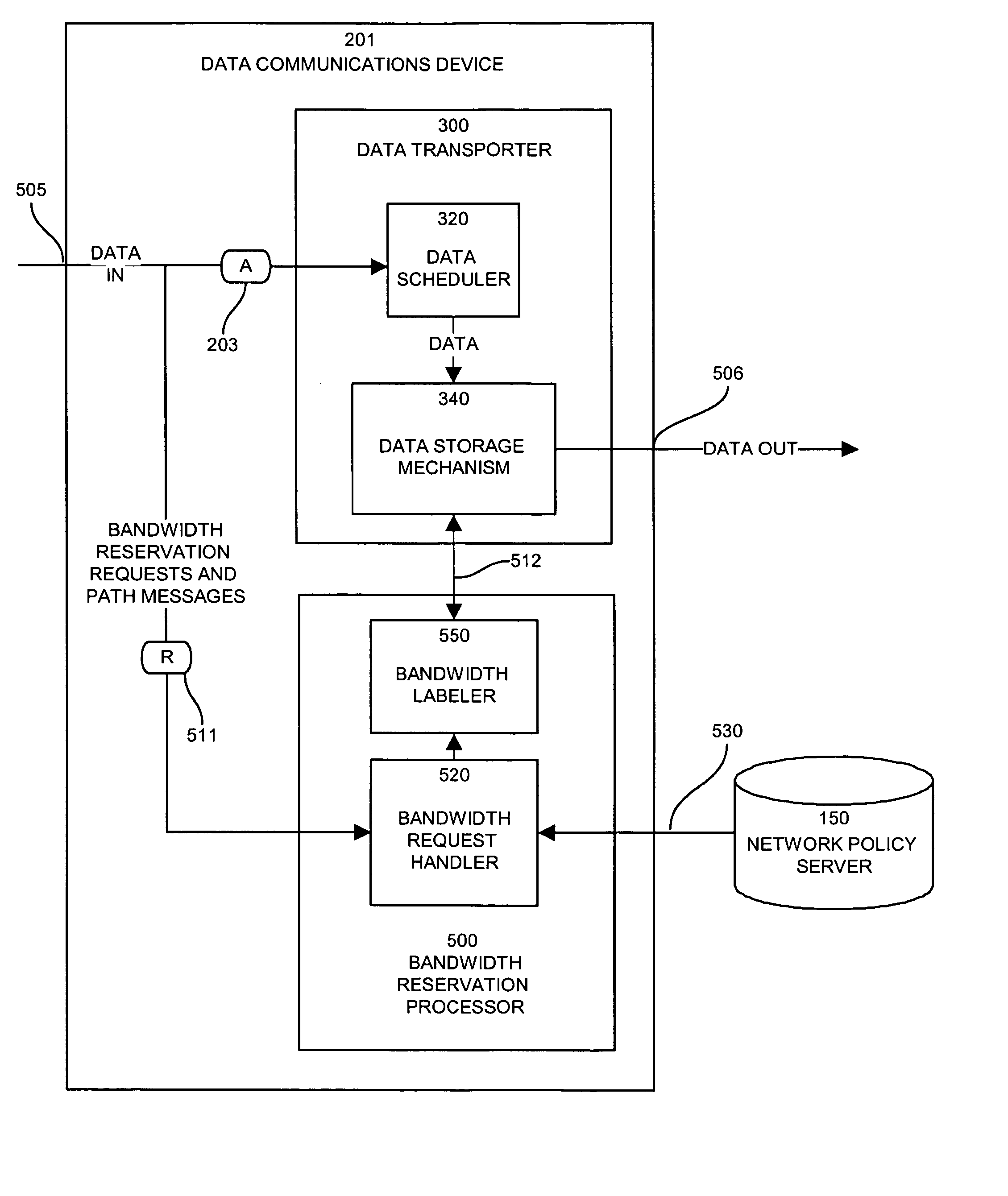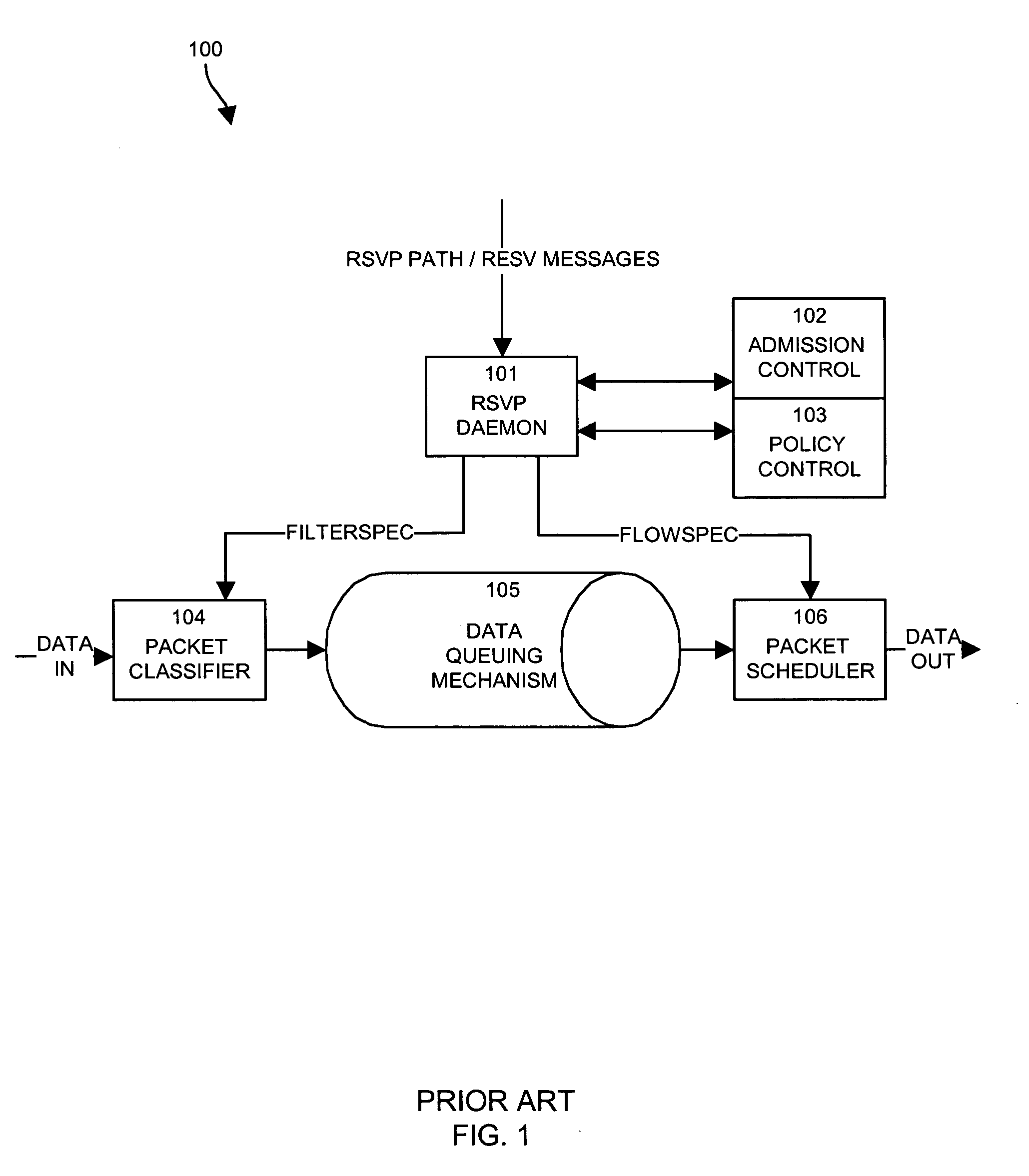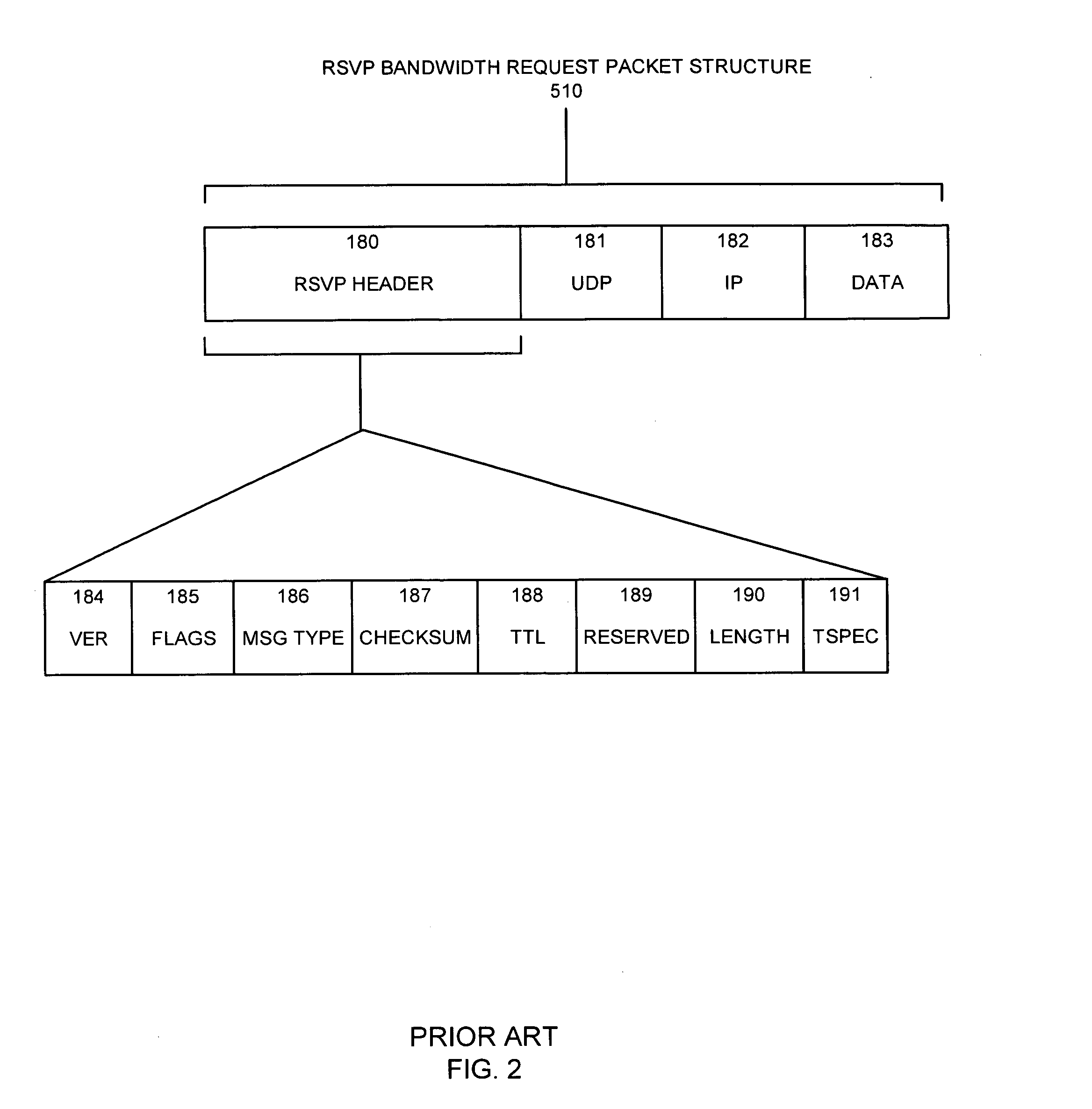Apparatus and methods for dynamic bandwidth allocation
a dynamic bandwidth and allocation method technology, applied in the field of apparatus and methods for dynamic bandwidth allocation, can solve the problems of imposing limitations, unable to adjust the amount of reserved bandwidth, so as to achieve the effect of adjusting the bandwidth
- Summary
- Abstract
- Description
- Claims
- Application Information
AI Technical Summary
Benefits of technology
Problems solved by technology
Method used
Image
Examples
Embodiment Construction
[0054] An brief overview of the invention will assist in understanding the discussion of detailed embodiments. Generally, the system of the invention allows a data communications device to dynamically reserve bandwidth and adjust bandwidth reservations for sessions of data communication without session disruption. The device can perform reservation and adjustment operations independently of sessions of data communication that are in progress (i.e. actively being transmitted) in the device and that may be using any currently reserved bandwidth resources. However, as the bandwidth is adjusted, the session(s) for which bandwidth adjustment is made are transported according to the new bandwidth reservation. That is, adjustments in reserved bandwidth for a session of data communication can be made without concerning or bothering the continual process of transporting data for that session, but the session data itself will be transported using the new bandwidth reservation as it is put in ...
PUM
 Login to View More
Login to View More Abstract
Description
Claims
Application Information
 Login to View More
Login to View More - R&D
- Intellectual Property
- Life Sciences
- Materials
- Tech Scout
- Unparalleled Data Quality
- Higher Quality Content
- 60% Fewer Hallucinations
Browse by: Latest US Patents, China's latest patents, Technical Efficacy Thesaurus, Application Domain, Technology Topic, Popular Technical Reports.
© 2025 PatSnap. All rights reserved.Legal|Privacy policy|Modern Slavery Act Transparency Statement|Sitemap|About US| Contact US: help@patsnap.com



